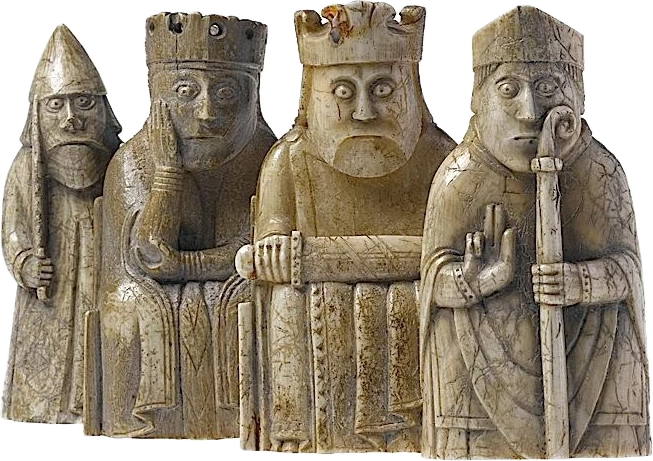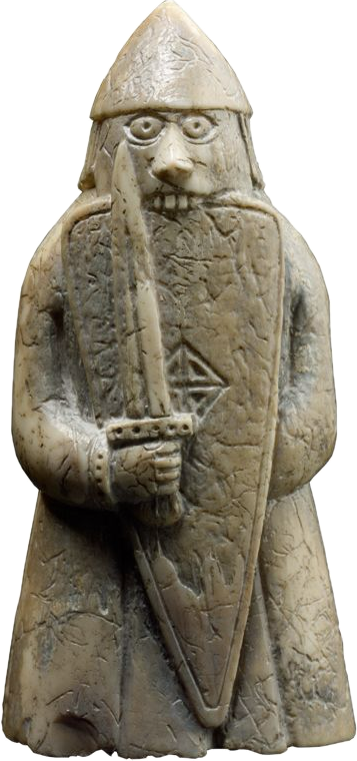History of the Berserker
Berserker Chess: A Nod to History, A Leap Forwardasdefr
Berserker Chess draws inspiration from the legendary Lewis Chessmen — iconic medieval chess pieces carved nearly nine centuries ago. These pieces include rooks depicted as fierce Norse warriors biting their shields. These wild-eyed “berserkers” perfectly embody the bold, dynamic spirit of our modern chess variant.
In Berserker Chess, we chose the Knight, not the Rook, to take on the role of the Berserker. The Knight’s unique movement and tactical potential align perfectly with the game’s goals, adding layers of strategy and controlled chaos to every match.
The Lewis Chessmen: A Medieval Marvel
Discovery and Origins
 The Lewis Chessmen were discovered in 1831 on the Isle of Lewis in Scotland’s Outer Hebrides, specifically at Uig Bay. This remarkable collection of 93 chess pieces (technically 78 chess pieces and 14 other gaming pieces) was carved primarily from walrus ivory in the late 12th century, likely between 1150-1200 CE. Most scholars believe they were crafted in Trondheim, Norway, during a period when the Hebrides were under Norwegian control.
The Lewis Chessmen were discovered in 1831 on the Isle of Lewis in Scotland’s Outer Hebrides, specifically at Uig Bay. This remarkable collection of 93 chess pieces (technically 78 chess pieces and 14 other gaming pieces) was carved primarily from walrus ivory in the late 12th century, likely between 1150-1200 CE. Most scholars believe they were crafted in Trondheim, Norway, during a period when the Hebrides were under Norwegian control.
The pieces represent one of the most significant archaeological discoveries for medieval chess, exemplifying the high artistic achievement of Nordic craftsmen and providing invaluable insights into medieval European chess design. The majority of the pieces are now housed in the British Museum in London, with 11 pieces displayed at the National Museum of Scotland in Edinburgh.
The Berserker Rooks
 The Berserker pieces in the Lewis chess set are particularly fascinating as they represent rooks portrayed as wild-eyed warriors biting their shields – a classic representation of Norse berserkers, the fierce Viking warriors known for fighting in an uncontrolled, trance-like fury. These pieces are unique among medieval chess sets for depicting rooks as human figures rather than the more common abstract towers or chariots.
The Berserker pieces in the Lewis chess set are particularly fascinating as they represent rooks portrayed as wild-eyed warriors biting their shields – a classic representation of Norse berserkers, the fierce Viking warriors known for fighting in an uncontrolled, trance-like fury. These pieces are unique among medieval chess sets for depicting rooks as human figures rather than the more common abstract towers or chariots.
The berserkers are shown standing upright, wearing pointed helmets, holding shields, and biting their shields in a characteristic pose that was described in Norse sagas as a sign of warriors working themselves into a battle frenzy. Four berserker pieces were found among the Lewis chessmen, each carved with slightly different details but maintaining the same basic warrior-biting-shield design.